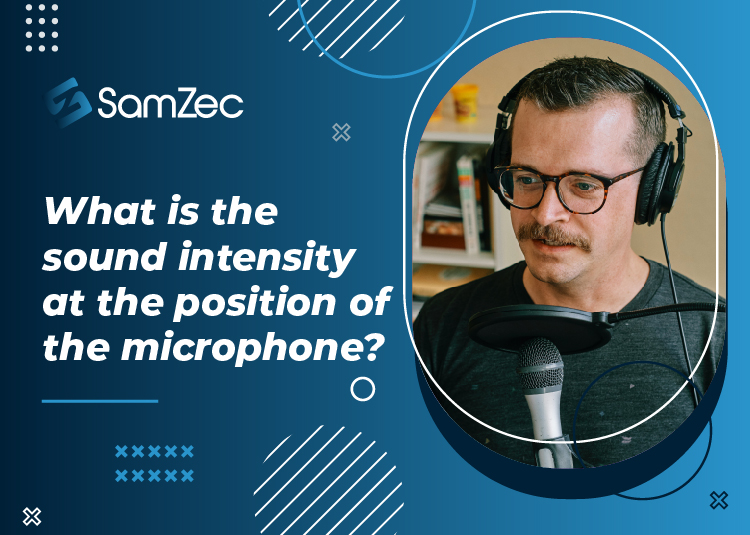Sound Intensity at the microphone’s position [in dB] is a measure of the noise intensity at the microphone location. In the frequency range from 20 Hz to 20,000 Hz, sound intensities are measured in dB SPL (sound pressure level) or dB L Aeq (sound level). Intensities are calculated at the microphone location.
To determine the sound intensity at another position, one must also know the distance from the microphone to that position. This article will discuss the Intensity of sound at a microphone’s position.
What is the sound Intensity at the position of the microphone?
The following elements influence the sound intensity at the microphone’s position:
- The source’s sound pressure level.
- How far the source is from the microphone.
- The directivity of the source. If the source has no directivity and is a “point source,” the Intensity will be directly related to the sound pressure level.
- In the case of one that is a “spherical wave source,” the intensity doesn’t depend on the pressure of the source. that is present in the location. For example, if you are twice as far away from the source, you will experience about one-sixth of the Intensity. You will feel about one-ninth of the intensity if you are three times as far away.
Must Read: What is a shotgun microphone
How sound Intensity is measured on microphones?
Sound Intensity is measured in decibels (dB) in microphones. The decibel scale is logarithmic, which means that every time you double the Intensity of the sound, the decibel reading will increase by 3 dB.
As our hearing is not linear, decibels are measured on a logarithmic scale. It’s a personal choice. For example, if you go from a whisper to a shout, your ear will perceive this difference as a doubling in sound level, although the actual sound level has increased by 6 decibels.
Intensity at the position of the microphone change concerning the distance of the source
The intensity decreases as the distance between the source and the person who is watching it decreases. The average speed of energy flow in a given area is referred to as intensity. Energy cannot be viewed as a simple quantity, but rather it is a product of force and distance, measured in Joules/second. Hence, as distance increases, the force of a sound decreases, thereby decreasing the Intensity.
Conclusion:
The sound Intensity at the microphone position is the sound pressure times the sound pressure area at this point. Since the sound pressure area depends on the distance from the microphone, the sound intensity at the microphone’s position is not constant. We hope you enjoyed our blog on sound Intensity helpful. Thanks for reading.
FAQs
What is sound Intensity?
The sound Intensity at a specific point is the Intensity, or loudness, of the sound at that point. The SI unit for sound intensity is the pascal (Pa), and it is measured in the root-mean-square pressure variation with a frequency of 1 hertz. The intensity level is denoted as I, measured in decibels (dB).
The sound Intensity at a point is dependent on the pressure variation of a sound wave at the point. The intensity level of a sound can be calculated by considering the formula below:
How does sound Intensity vary?
The intensity of sound changes in inverse proportion to the square of distance to the source i.e. increasing the distance decreases the volume of sound by half. So, the intensity of a source’s sound at a distance of 10 m is 20 times greater than at a distance of 20 m.
The magnitude of the sound wave is related to the intensity of its sound. There will be sound waves in all directions at some point. Acoustic power is the amount of energy each second. The acoustic output per unit area is known as the intensity.
What is the sound Intensity at various frequencies?
The level of sound pressure of Pascal is the sound’s intensity level of the position of the microphone. It would help if you were careful not to exceed the sound intensity level in the recording studio. For example, a sound intensity level of 110dB can damage your ears. You should use the sound intensity level meter to control the sound intensity level in a quiet environment.




















